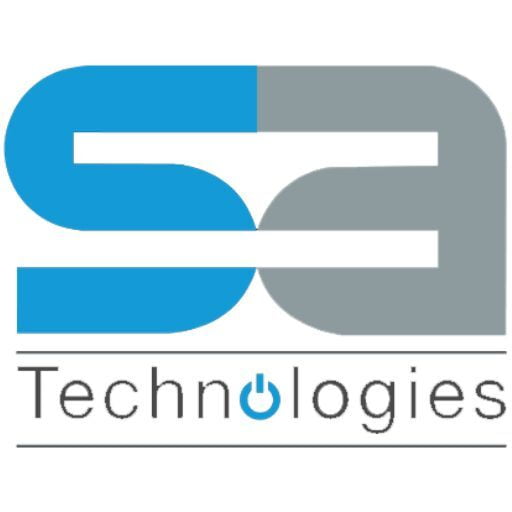In today's rapidly evolving workplace environment, especially in the wake of the COVID-19 pandemic, ensuring the wellbeing and safety of employees has become a top priority for HR departments. Traditional methods of managing these aspects are no longer sufficient, requiring innovative and tech-driven solutions. Enter the Microsoft Power Platform a suite of powerful tools including Power BI, Power Apps, Power Automate, and Power Virtual Agents that can transform how HR operates. In this blog post, we will explore two significant HR organizational problems and how Power Platform offers effective solutions.
HR Organizational Problem 1: Ensuring Staff Wellbeing and Safety Post-Pandemic
Problem:
The COVID-19 pandemic has significantly altered workplace dynamics, necessitating robust measures to ensure staff wellbeing and safety. HR departments are now faced with the challenge of monitoring staff health, ensuring compliance with safety guidelines, and providing timely support to affected employees. This includes tracking potential exposures to the virus, ensuring that employees adhere to new safety protocols, and quickly responding to health-related incidents.
Solution:
Microsoft Power Platform offers a comprehensive suite of tools designed to address these challenges effectively. By leveraging Power BI, Power Apps, Power Automate, and Power Virtual Agents, HR departments can implement robust solutions that ensure staff wellbeing and safety.
Implementation:
1. Sales Staff Check-In:
- Tool Used: Power Apps
- Description: Sales staff can use a check-in app to log their visits to client locations, ensuring that HR is immediately notified if any staff member has visited a location with a reported COVID case.
- Benefit: This allows HR to quickly identify potential exposures and take necessary actions to mitigate risk, such as informing the relevant team member and providing support for self-isolation if necessary.
- Process:
- Sales staff use the check-in app on their mobile devices to log visits.
- If a potential exposure is detected, the app sends an alert to HR.
- HR then reviews the alert, informs the staff member, and initiates isolation protocols if needed.
2. Return-to-Work Policy Compliance:
- Tool Used: Power Automate, secured by Microsoft Active Directory
- Description: Managers can automate checks to ensure that all employees have read and acknowledged the return-to-work guidelines and policies.
- Benefit: This ensures that all staff members are aware of and adhere to safety protocols, minimizing health risks in the workplace.
- Process:
- Power Automate sends out policy documents to all employees.
- Employees acknowledge receipt and understanding of the guidelines.
- The system tracks acknowledgments and sends reminders to those who have not responded.
- Managers can review compliance reports to ensure all staff are up-to-date with safety protocols.
- Power Automate sends out policy documents to all employees.
HR Organizational Problem 2: Measuring and Supporting Employee Mental Wellbeing
Problem:
In the current climate of uncertainty, many employees are experiencing heightened levels of anxiety and depression. Traditional face-to-face interactions are limited, making it challenging for HR to gauge and support employee mental health effectively. Ensuring mental wellbeing is crucial for maintaining a productive and engaged workforce.
Solution:
Microsoft Power Platform can be leveraged to consistently measure and support employee wellbeing through automated surveys and virtual check-ins. By using Power Apps, Power Automate, and Power Virtual Agents, HR departments can create a supportive environment that addresses mental health concerns proactively.
Implementation:
1. Employee Wellbeing Surveys:
- Tool Used: Power Apps, Power Automate
- Description: Managers can send out regular surveys to staff asking simple, yet impactful questions like “How are you feeling today?”.
- Benefit: These surveys help gather consistent feedback on employee mental wellbeing, allowing HR to identify those who may need additional support.
- Process:
- Surveys are created in Power Apps and distributed via email or the company intranet.
- Employees fill out the surveys, providing insights into their current mental state.
- Power Automate collects survey responses and analyzes the data.
- HR receives detailed reports highlighting trends and identifying employees who may need further support.
- Automated reminders are sent to employees who have not completed the surveys to ensure high participation rates.
2. Virtual Agent Support:
- Tool Used: Power Virtual Agents, Power Automate
- Description: Integrating Power Automate with virtual agents provides a way for organizations to check in with employees and new starters, offering immediate support and information.
- Benefit: Virtual agents can offer answers to basic questions, support emotional intelligence gathering, and provide an additional layer of employee support without overwhelming HR staff.
- Process:
- Employees can interact with virtual agents for routine queries like finding certain files or resetting passwords, ensuring they receive timely help.
- Virtual agents can be programmed to ask wellness-related questions and provide resources or escalate issues to HR if necessary.
- Regular check-ins can be scheduled where virtual agents initiate conversations about mental wellbeing, providing a non-intrusive way to monitor employee health.
- All interactions are logged and analyzed to provide HR with actionable insights.
Conclusion
The Microsoft Power Platform offers a robust set of tools that can transform how HR departments address the challenges of ensuring employee wellbeing and safety, particularly in a post-pandemic world. By implementing solutions like sales staff check-in apps and return-to-work policy compliance checks, HR can maintain a safe and healthy workplace. Additionally, tools like employee wellbeing surveys and virtual agent support can proactively address mental health concerns, ensuring a happier and more productive workforce.
Leveraging the Power Platform not only streamlines HR processes but also creates a supportive and responsive environment that prioritizes employee wellbeing. As organizations continue to navigate the complexities of the modern workplace, these tools provide the flexibility and efficiency needed to maintain a thriving, engaged, and healthy workforce.
Also Read: Power Up Your Business: Unveiling the Powerhouse Capabilities of Microsoft Power Platform
